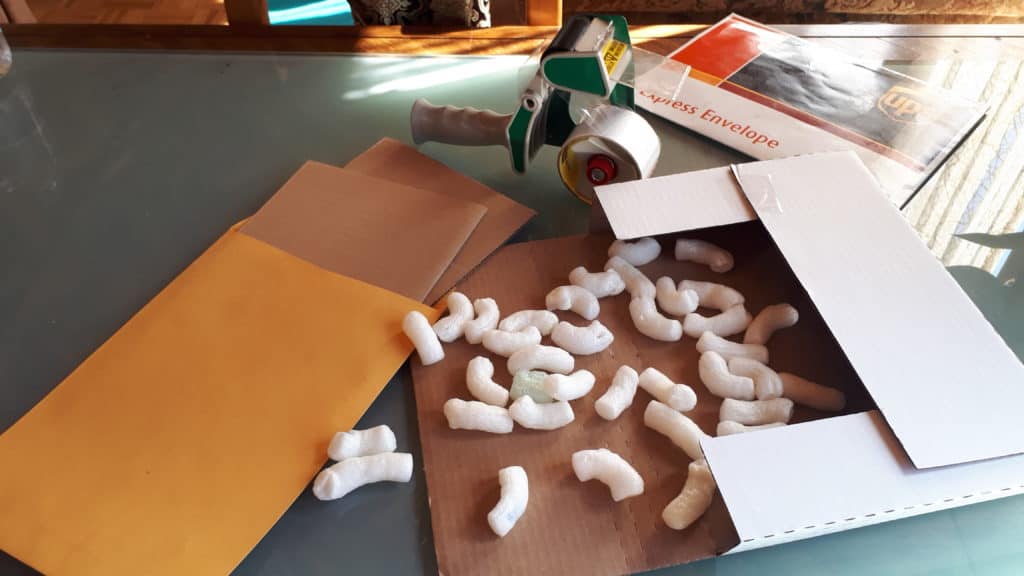(This is a follow up to my previous post, Out Of Print Profits Part Two: Ready to Hunt for that Out Of Print Gold? Great! Now What? Check it out to get up to speed!)
So you found some out of print books that you are feeling pretty good about and you are hoping that they will sell for some decent money. Congratulations! I knew you would find something.
Listing That New Book
Now all you have to do is figure out how you are going to list them. Regardless of whichever online platform you decide to sell through, whether it is Amazon, Ebay, mycomicshop.com or any other marketplace, there are a few basic guidelines you should follow.
My first piece of advice is to make sure you are listing your books in the right place. With a marketplace like Ebay it is up to the seller to properly describe the item up for sale; there are only basic categories and sub-categories available to the seller so it is your responsibility to supply an adequate description of your item for your listing. As well, Ebay is the kind of marketplace where you are expected to supply pictures to further clarify what it is you are selling – ie as proof that you are accurately describing the book in your listing and that you are being honest about the condition.
That leads me to my next piece of advice: be honest about the condition of a book that you are selling. There is nothing worse than ordering something from a marketplace seller only to find that once it has arrived it is not in as good a condition as you were led to believe by the seller. This is especially important for Amazon sellers because, unlike with Ebay, Amazon sellers are not expected to supply any images of an item they are selling. Now for anyone considering selling graphic novels on Amazon there is something else to keep in mind with regards to being accurate with your item descriptions. If you ever have any doubts that a book you plan to list can be considered to be in ‘NEW‘ condition, you should probably just go ahead and list it as ‘USED – LIKE NEW‘. Remember, Amazon no longer lets you as the seller add any comments/descriptions to your listing if you choose to list it as a NEW item, so there is nowhere for you to tell a potential buyer that a book is new and unread but that it has noticable shelf wear along the bottom or that it has some minor creasing across the back cover or anything else that might make a buyer feel that they have been misled by a seller who was offering a book in NEW condition. Better to choose the USED – LIKE NEW condition for a book if defects like that exist. This might seem like nitpicking but remember that every customer is encouraged by Amazon to leave feedback and dissatisied customers are probably going to be pretty motivated to express their dissatisfaction through negative feedback. Look at it this way: as a seller do you really want to have a lower customer satisfaction rating hanging around your neck? When was the last time you choose to buy from an Amazon marketplace seller with an 85% satisfaction rating if you could avoid it by paying a little bit more to buy from a seller with better customer feedback? Exactly. The other way to look at it is that by under grading your books (ie describing an arguably new copy of a book as used) you set yourself up to receive positive feedback from a buyer who got a book in better condition than they might have been expecting! This is not just a hypothetical situation either since I am speaking from experience and have had a number of customers leave positive feedback after receiving a book from me that (in their eyes) was in better shape than they were expecting from my decision to list it as a used book.
The last thing I want to touch on with regards to listing your books is pricing. When you choose a price for your out of print book you need to strike a balance between being competetively priced so that your book will move and being fairly rewarded for your book hunting efforts. One benefit of selling out of print books is that you are less likely to get caught up in a ‘race to the bottom’ pricing mentality that you see all the time with sellers who are listing popular books that are still in print. Try not to be too greedy when pricing your inventory and ask yourself if you would rather price a book to sell in a few days, a few weeks or a few months?

After the Sale (A.K.A. It’s Time to Ship!)
Okay so lets say that you priced your book competitively and it sold. (Way to go!) Your next concern is making sure you do a decent job of packing and shipping it so that it gets to your customer in the same shape it was in when it left your hands. Even though the book you are shipping might be thick and not easily folded while in transit, you still need to pack it securely – just to make sure that it doesn’t get too dinged up. Personally, I don’t think that a padded envelope is enough protection from the ‘wild elements’ of the postal system; I like to pack a book with cardboard (cut to the books size) taped to both sides of the book. You do this and you are adding a lot of protection to your shipment. Another benefit of using cardboard is that you can save money on your choice of envelope: by having the cardboard present, you are adding enough padding that you don’t really need to use a padded envelope. I use to go with a padded envelope as well as cardboard but have stopped this practice because I believe that the cardboard is protection enough allowing me to go with a regular manila kraft envelope instead. My preferred envelope size is 9×12 which I find is large enough to snugly fit most regular sized trade paperbacks and is the kind of envelope that you should be able to find at any Staples or other office supply store – or even at some of the better dollar stores out there. (I also noticed that the padded envelopes tend to give up a bit of size because of the extra padding so sometimes the fit was a bit tight for some paperback books.
For Those Bigger Books…
The above advice is for shipping ‘regular sized’ trade paperbacks. For shipping oversized books or most hardcovers I go with a cardboard box. I use to go with larger envelopes but I figured out pretty quickly that reinforcing larger books with cardboard is just not quite as practical, and besides once you are dealing with larger hardcover books such as an omnibus, a box is just about as cost effective as an envelope.
Also when you are dealing with larger books you are probably dealing with parcel rates instead of oversized letter mail. The kind of mailer that I like to go with for most oversized books that I need to ship is an easy-fold 9-1/8″ x 12-1/8” corrugated mailer with scored flaps for adjustable depth. To stop a book from sliding around inside the box I usually tape the book to the flat of the box with packing tape and finish with a backing board over top. For larger books (again like an omnibus, for example) instead of taping it down I pre-wrap the book in bubble wrap and if there is still much space left around the wrapped book I fill the box with whatever packing material I have on hand.(stuff like Styrofoam packing peanuts or balled up paper, etc.)
I tend to use the cheapest parcel rate available that includes a customer tracking number for my own peace of mind since a tracking number offers you confirmation that the shipment was sent out and delivered and helps both you and your customer figure out where their order is at any given time after you have shipped it. However for my higher priced book orders I like to add a customer signature upon delivery option to the shipping just to have extra confirmation that not only was the book delivered to the address but that it was also handed over by the postal delivery person to someone at the address who acknowledged receiving it at the time of delivery. This could be very important if you should ever have a customer claim that they never received their order because sites such as Amazon will often tend to side with the buyer if they file this kind of claim and you cannot show proof of receipt by someone at the designated delivery address. To be honest however, adding a signature is not something I concern myself with my lower-priced sales – just my higher-priced items. For oversized or heavier books I use a discounted shipping rate that includes tracking so my larger/heavier orders always go out with a tracking number. I sell and ship out of Canada so I take advantage of Canada Post’s Solutions for Small Business program (its free to join) that offers a discounted expedited shipping rate that includes both tracking and free shipment insurance for its members. If you look for it you can probably find a similar offering for those making use of the US Postal Service.
Well there you have it, some basic guidelines that you can follow once you have found some books to sell. I hope that these suggestions are helpful to you as you begin selling your out of print gems online!
